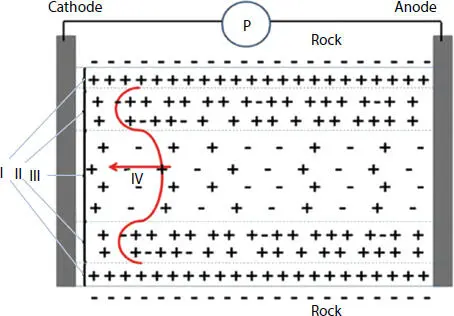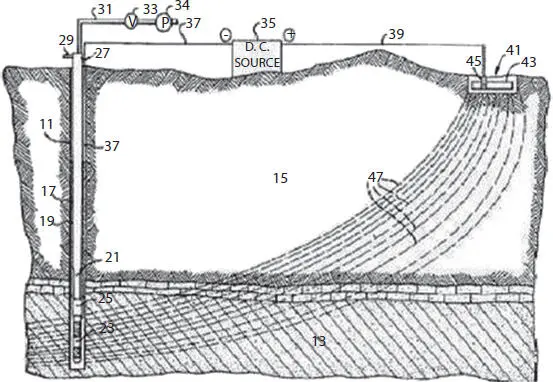It is necessary to establish what conditions existed during the primary migration of oil (from the source rocks to reservoir rocks) compared to those during the secondary migration of oil (during production) to make the former so much more efficient. Several possible explanations are presented below. Among them are (1) seismic activity (earthquakes), (2) intense electrokinetics, (3) Earth tides, (4) compaction, and (5) migration in a gaseous form.
According to the site http://www.iris.washington.edu/SeismiQuery/events.htm, 66 earthquakes with magnitudes 2 or higher occurred over the globe on average per night for the period from 01.01.2000 to 01.01.2010.
Assuming that the seismic activity of the planet Earth was the same as at the beginning of the 21st century, one can calculate how many earthquakes occurred during the Paleozoic, Mesozoic, and Cenozoic times:
In the Paleozoic 69,507,200 million
In the Mesozoic 27,429,750 million
During the Cenozoic 7,924,150 million
On considering precursor activity of earthquakes, the minimum frequency oscillations in the number of earthquakes, and gravity attraction of the Sun and the Moon, then the volume of fluid movements due to dynamic forces in the migration routes in the geological past was immense (Fedin et al. , 2013 [14]).
The seismic vibrations (elastic oscillations) eliminate the blocking effects of the residual oil, gas, and water phases, enable movement through the low permeability zones, and increase the areal and vertical sweep efficiency.
The physical theory behind the application of seismic vibration to increase production was discussed in detail by Beresnev and Johnson (1994) [5], Beresnev (2006) [6], Kouznetsov et al. (1998) [18], (2001) [19], (2002) [20], Pride et al. (2008) [26], and Fedin et al., (2013) [14].
Hydraulic fracturing also can occur with high-pressure impulses within the low-permeability zones (Kouznetsov et al. (2002) [20]). In the FSU, the use of various vibration techniques resulted in an incremental oil production of 200 million bbls (see Kouznetsov et al. (2002) [20], Figure 1.3). Fedin et al. (2013) [14] reported additional recovery of millions of bbls of oil by using explosions (60-kg explosives) in producing wells.
Electric currents are prevalent in the Earth’s crust and probably were amplified in the geologic past (Serruya et al., 1967 [29]). Upon application of DC current, for example, the flow rate can increase many fold both in clays and sands (Amba et al. , 1965 [1]; Chilingar et al. , 1970 [10]). Thus, the presence of intense electric currents in the geologic past possibly facilitated primary migration of oil. Figure 1.2shows the schematic diagram of electrokinetic double layer.

Figure 1.2 Schematic diagram of electrokinetic double layer (I: Immobile layer, II: Mobile double layer, III: Free water, IV: Velocity profile as envisioned by Dr. G. V. Chilingar. Solid curved line: velocity profile in a capillary. P-D.C., current power supply).
Theory of the electrokinetic flow is based on a double-layer theory as illustrated in Figure 1.2. According to Figure 1.2, the negatively charged surface of the clays attracts the positive ions of the aqueous medium, forming the immobile double layer. This immobile double layer is followed by a thick mobile layer with a predominance of positively charged ions (cations) with a few negatively charged ions (anions).
Upon application of direct electric current, the mobile double-layer moves toward the cathode, dragging the free water. A schematic diagram of EEOR field setup, as used by Wittle et al. (2008) [38] and (2011) [39] in Canada and California oil fields, is presented in Figure 1.3.
In case where imposed electric potential gradient, E , is in the same direction as the pressure drop ( Δp ), the total flow rate ( q t) upon application of D.C. current is as follows:
(1.1) 
where k is the hydrodynamic permeability;  is the electrokinetic permeability; Δp is the pressure drop; µ is the viscosity; L is the length of porous media; A is the cross sectional area of porous media; ζ is the zeta potential; F is the formation resistivity factor (Archie’s); E is the electrical potential; and D is the dielectric constant.
is the electrokinetic permeability; Δp is the pressure drop; µ is the viscosity; L is the length of porous media; A is the cross sectional area of porous media; ζ is the zeta potential; F is the formation resistivity factor (Archie’s); E is the electrical potential; and D is the dielectric constant.

Figure 1.3 Schematic diagram of EEOR (Electrical Enhanced Oil Recovery) electrode arrangement in oil fields as used by Wittle et al. (2008) [38] and (2011) [39], Ambah et al. (1965) [1], and Titus et al. (1985) [35].
Equation (1.1)can be presented in a dimensionless form by normalizing the flow rates and, thus, eliminating µ , A , and L terms (Chilingar et al. , 1970 [10]):
(1.2) 
and
(1.3) 
where q iis the initial hydrodynamic stabilized flow rate:
(1.4) 
Thus, the possible existence of strong D.C. current in the rocks during the geologic past could have facilitated the movement of fluids (Ambah et al. , 1965 [1]).
In the classic book on wettability, Donaldson and Alam (2013) [13] pointed out that Earth tides activate the motion of fluids by continued expansion and contraction as simple harmonic oscillation resulting from diurnal tides. This effect was much greater earlier in geologic history because the moon was much closer to the Earth. Currently, the moon is moving away from the Earth at ≈3 cm/yr. Thus, the Earth tides were more rapid and energetic, resulting in greater dilation and the compression of rocks. According to Donaldson and Alam, in a 10-m-thick reservoir, with a radius of 100 m, an elastic change of porosity of 0.1% will result in an oscillatory motion of 294 bbl of fluid. Such motions could reduce the oil saturation to zero over geologic time, leaving only a trace amount of oil behind.
In order to investigate some problems involved in the primary migration of oil, Aoyagi et al. (1985) [3] compacted Na-monmorillonite clay mixed with seawater and crude oil for 25 days under a pressure of 1,000 kg/cm 2and a temperature of 60°C. The proportion of oil in the expelled liquid increased with time. The porosity of the compacted sample decreased from 81% to ≈26%. These authors concluded that the primary migration of oil from source rocks to reservoir rocks occurred chiefly during the late compaction state (ϕ = 10%−30%). Considering the fact that tectonic activity during the primary migration of oil was intense, the oil was simply squeezed out (expelled) from the source rock.
Читать дальше



 is the electrokinetic permeability; Δp is the pressure drop; µ is the viscosity; L is the length of porous media; A is the cross sectional area of porous media; ζ is the zeta potential; F is the formation resistivity factor (Archie’s); E is the electrical potential; and D is the dielectric constant.
is the electrokinetic permeability; Δp is the pressure drop; µ is the viscosity; L is the length of porous media; A is the cross sectional area of porous media; ζ is the zeta potential; F is the formation resistivity factor (Archie’s); E is the electrical potential; and D is the dielectric constant.














